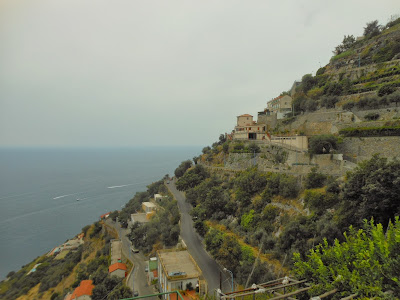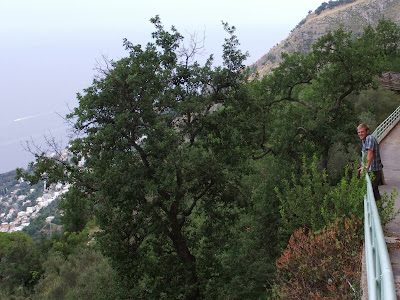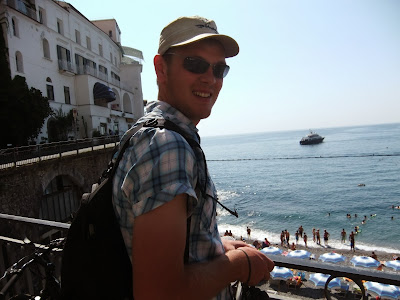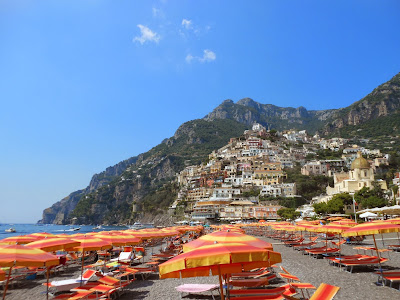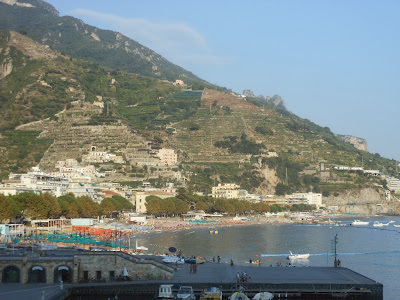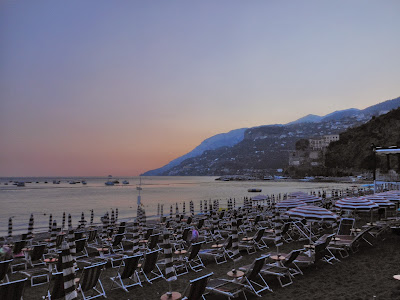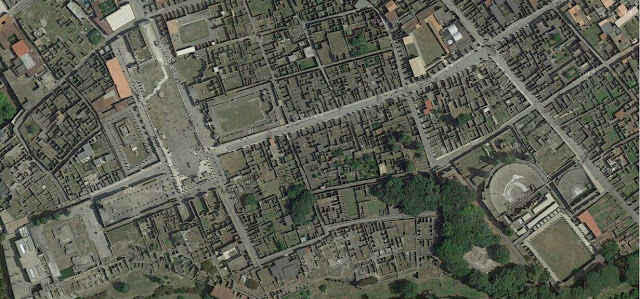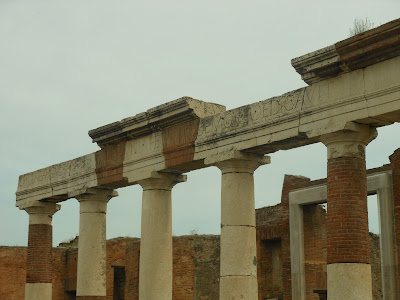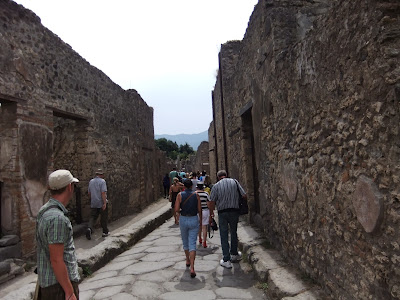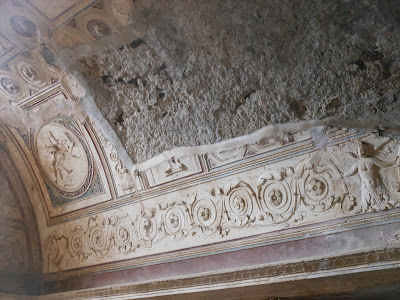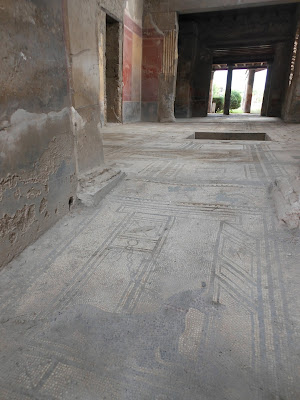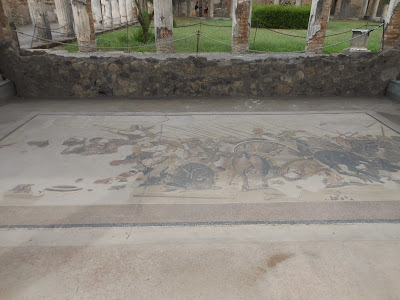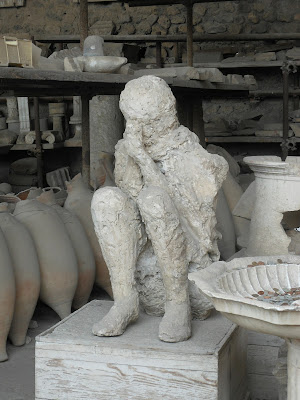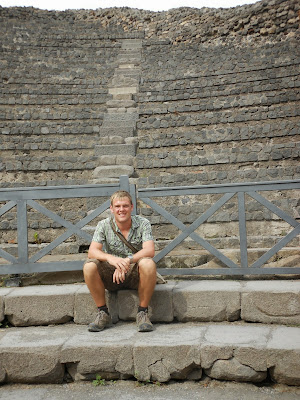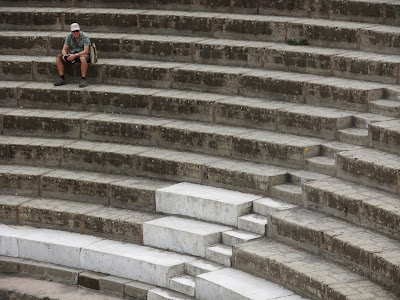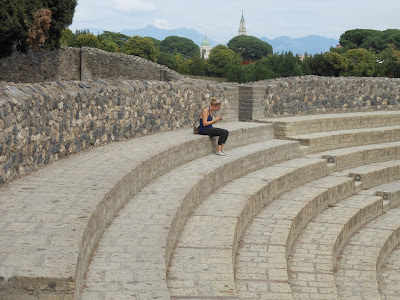26 - 29 August
We got one of the slow trains through to Roma (Rome) - Italy has some very nice but very expensive fast trains - waited for over half an hour for our urban bus to small apartment we'd booked, but found a very friendly owner waiting for us at the bus stop who took us there and gave us a great overview of the city.
From first impressions Roma seemed like a busy, urbanised city, but we had a few hours to spare on our first afternoon and straight away, got a taste of one of the most famous historical sights in the world...
 |
| One guess as to what there is to see at the Piazza del Colosseo...? |
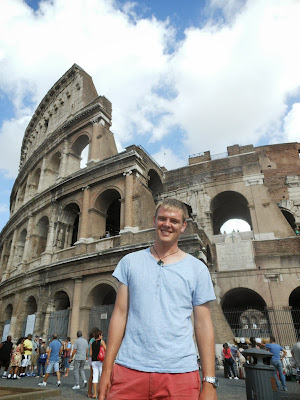 |
| The Colosseum |
As you probably all know, this was a construction from ancient Roman times (finished in 80 AD) which was used as a massive ampitheatre for the likes of gladiator sports and other public spectacles.
Interestingly, the massive angled walls that are so iconic of the Colosseum are, in fact, relatively modern additions! If you look closely in the photo above, the difference between the brickwork can be clearly seen. Previously, the whole Colosseum was as tall as the larger parts, but the southern side collapsed in earthquake damage in 1349. In the early 1800s the triangular block wedges were added for stability purposes.
The interior itself is in reasonably poor condition in places - much of the stonework, marble decoration and iron reinforcement clamps used have long since been removed, reused on other constructions. However, it's still a fascinating and surreal place to look around. We were there until dusk, and the sun setting behind the walls from inside was an impressive sight.
The gravity and significance of where we were was quite awesome. And there was graffiti in Latin!
 |
| View through an archway into the ampitheatre |
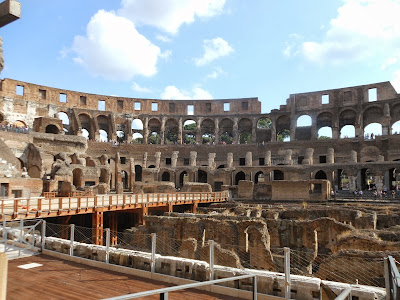 |
| Colosseum from inside, including the underground chambers where prisoners & animals etc were kept, and a reconstruction of the arena at the back left. The English word "arena" comes from the Latin for "sand", which covered the central exhibition space. |
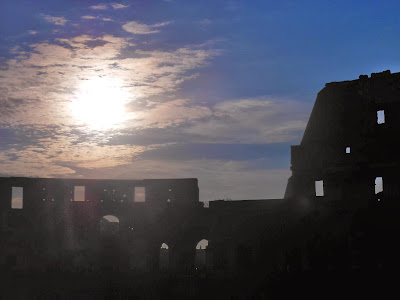 |
| Dusk from within the Colosseum, when all the tourists had left too |
The next day, we headed for the nearby Roman Forum, which (as the name suggests) was the forum where announcements, trials and the like - even including gladiatorial matches - were made to the Roman public. The site is littered with ruins covered in Latin scrawl and tributary arches to various army victories. A very detailed (overly so!) audio guide told us about the layers upon layers of history there, the many emperors who added their own buildings or arches to the area.
 |
| View over just part of the Forum |
 |
| One of the many tributary arches |
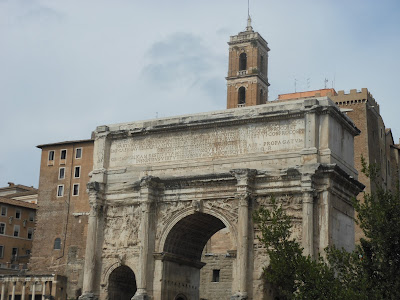 |
| Tributary arch of Septimus Severus (I think) covered in Latin accolades |
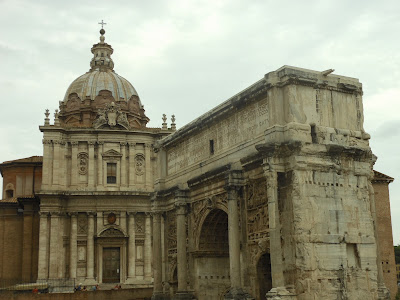 |
| Tributary arch & dome |
 |
Imagination tells me this is where Mark Antony shouted "Friends, Romans, Countrymen... Lend me your ears!".
History of course tells us otherwise! |
As we headed to the nearby Palatine Hill, where many various emperors and affluent Romans had their residences. Legend dictates that this is where Romulus and Remus were sheltered by a she-wolf, with Romulus going on to found the city of Rome (hence it's names). The name, "Palatine", is also said to be the origin of the word "palace".
The hill provided several good views, ruins of some of the emperor's palaces, and a large stadium-type place. As we were up there, a massive rain storm suddenly came through - massive thunder claps and everything. We sheltered from the rain for well over an hour before moving on!
 |
| The storm rolling in over the city - the greenish dome of St Peter's Basilica in The Vatican is visible on the horizon in the middle of the photo |
 |
| The Stadium of Domitian, part of his palace |
 |
| Sheltering from the rain! (not actually) |
Within half an hour, the sun was out shining bright again. A few more snaps of the forum, and we headed in towards some other parts of the city.
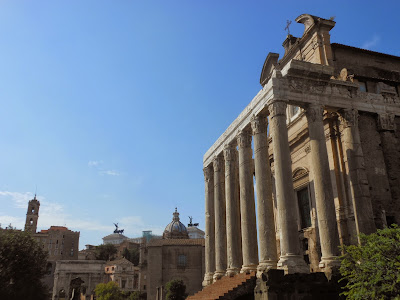 |
| The Forum with the sun out |
 |
| Altare della Patria (Altar of the Fatherland) which also houses a Tomb of the Unknown Soldier from World War I |
 |
| The very famous Fontani di Trevi - one of those places you go, push through the crowds for a photo, go, "that's really awesome" and then leave... |
So after just one and a half days, we'd seen quite a lot already... But Rome is a massive place absolutely steeped in history, and we'd barely got started. The next day we dedicated to Vatican City, a destination - and country! - in it's own right. We started in St Peter's Square, one of those places you've heard of so many times, and seen so often in movies or on TV, that it's incredibly familiar. Actually being there is another experience however!
 |
| Piazza San Pietro (St Peter's Square) in front of Basilica di San Pietro or Basilica Sancti Pietri (St Peter's Basilica) |
 |
| Piazza San Pietro |
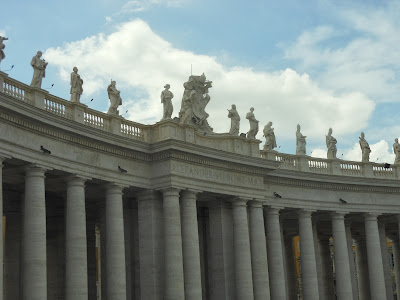 |
| Decorations above the Colonnades surrounding the piazza, which actually give the "square" an oval shape |
While I've been to numerous churches this year, St Peter's Basilica is a completely different experience. It's utterly
colossal - the largest Christian church in the world, and you can't help but stand in awe once inside, regardless of anyone's religious beliefs. Countless popes are interred there - not least the late Pope John Paul II, whose tomb was a very popular place for prayer. St Peter himself is believed to be buried below the altar.
 |
| This picture doesn't even begin to signify how incredibly large the basilica is |
 |
| The lavishly decorated ceiling & dome towering above the altar |
 |
| The tomb of the late Pope John Paul II ("Joannes Pavlvs" on the engraving) |
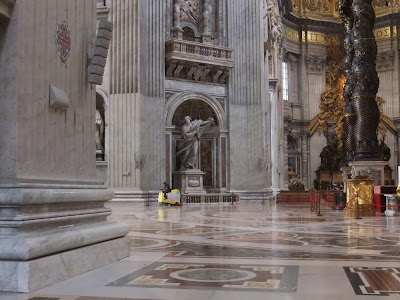 |
| Cleaning the floor! |
Despite anyone's religious beliefs, I found the basilica to be a fascinating place I could only be in awe of. You can't help but just go "wow". It was an excellent moment for a bit of personal reflection. The grotto beneath, home to many of the interred popes, was a bit spooky but also fascinating.
After getting our fill - both Lindsay and I were happy to wander for quite some time, marvelling at the place - we headed around to Musei Vaticani, home to countless treasures and also the gateway to enter the Sacellum Sixtinum or Cappella Sistina (Sistine Chapel).
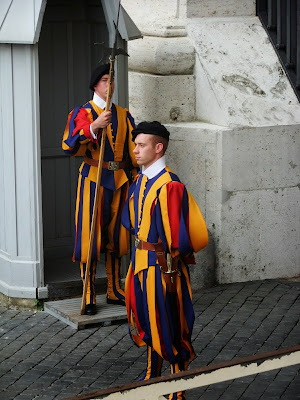 |
| Some Swiss guards we spotted on the way out |
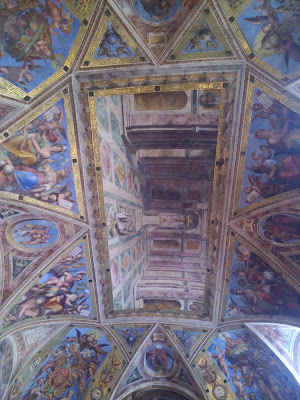 |
| Frescoes in the Apostolic Palace, home to the Sistine Chapel |
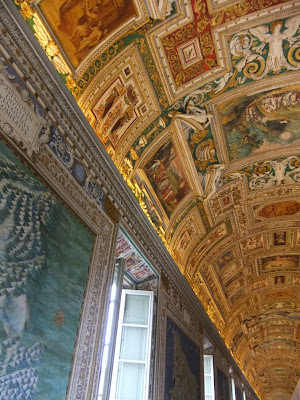 |
| A hallway in the Apostolic Palace |
The rooms throughout the Apostolic Palace itself are impressive enough, with countless amazing ceiling frescoes and an incredible collection of art. The most famous place itself, the Sistine Chapel, is right at the end of the museum route, one that is very strictly controlled for photos (i.e. none) and silence.
The Chapel itself is actually not the largest or most lavish room - a simple rectangular shape that was crowded with whispering people. However once you look up, your jaw kind of drops, and 10 minutes later you realise your neck is getting quite sore. The decorations of Michaelangelo are quite simply stunning, and looking up at it, you keep noticing more and more and more. And more.
We obeyed the photo police - actually it was quite nice to concentrate on where we were without trying to shoot off a photo - and headed back home quite in awe.
We had a bit of time on our last morning for a few more interesting spots.
 |
| Ruins of the Theatre of Pompey where Caesar is believed to have been assassinated (roughly near the tree at left) |
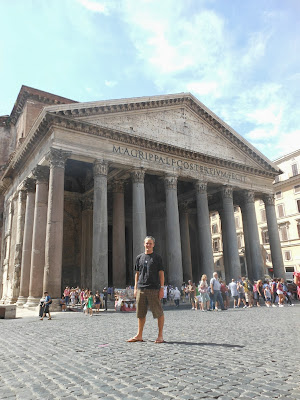 |
| What's this, another famous place??! The Pantheon... |
 |
| Inside The Pantheon |
As we crossed a bridge over the River Tiber, just before heading to the train station, we got one last view of Rome. It was an amazing few days - the history, the prestige, the centre of an empire and a religion - and it was almost hard to believe I'd been there. What a fascinating place!
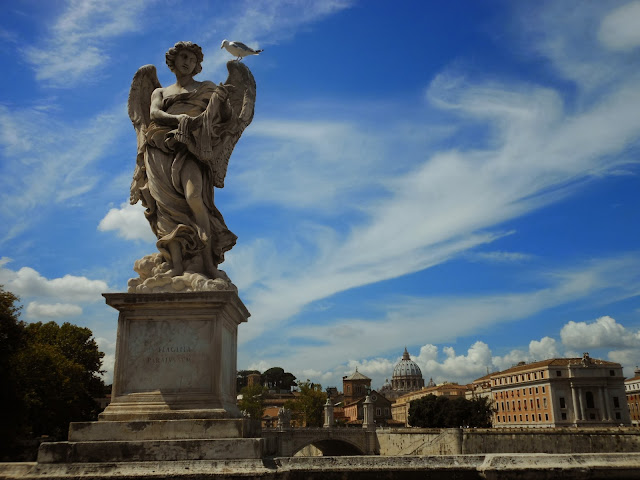 |
| View from a bridge over the River Tiber with St Peter's Basilica in the background |



